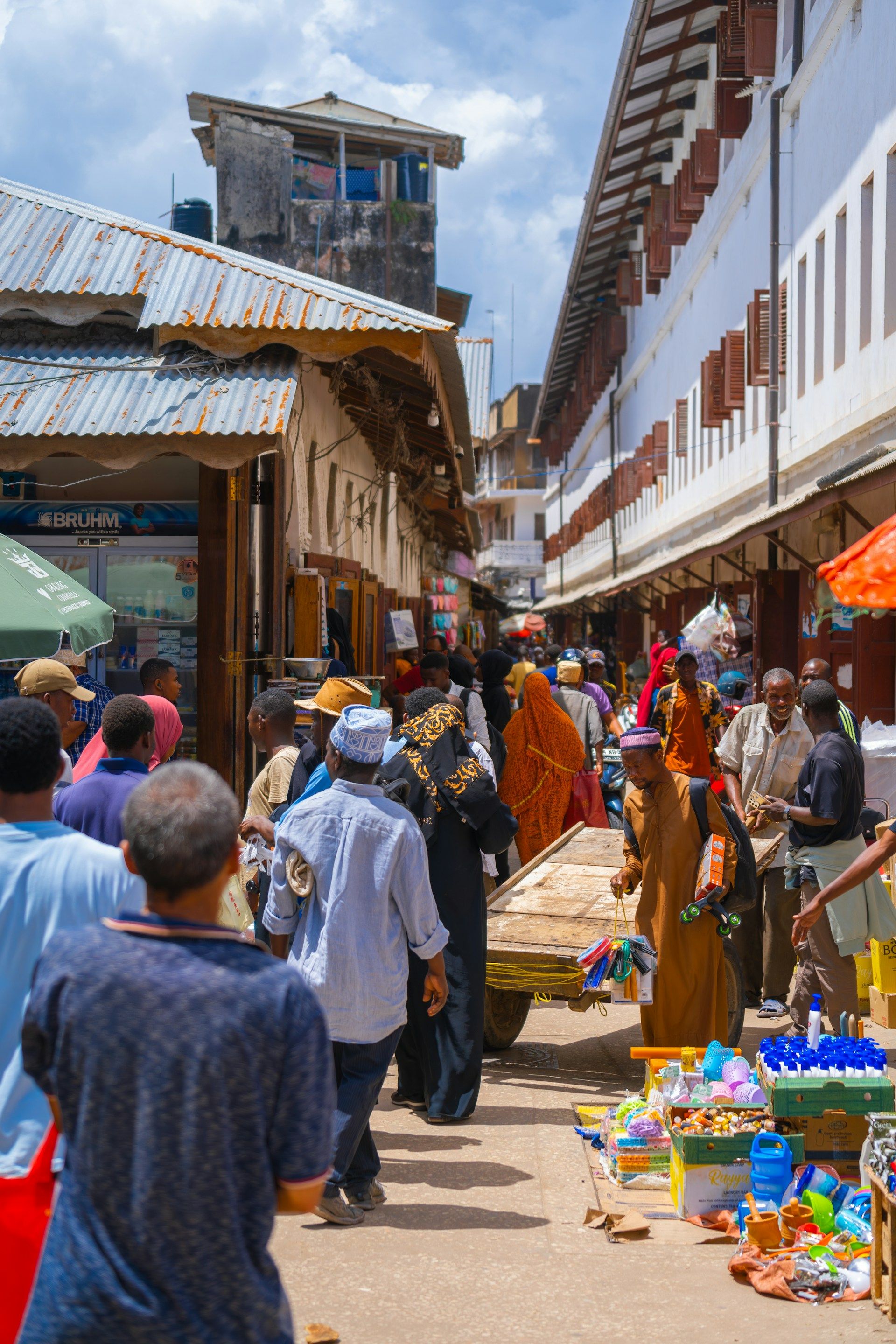Touring Stone Town, Zanzibar

Step into the heart of Zanzibar with a tour of Stone Town, where history whispers from every stone and culture dances in the air. Nestled on the western coast of Zanzibar, Stone Town stands as a testament to the rich tapestry of cultures and histories that have shaped this island over centuries. A UNESCO World Heritage site since 2000, Stone Town is a captivating labyrinth of narrow streets, ancient buildings, and bustling markets, all echoing the diverse influences of Swahili, Arabic, Persian, Indian, and European heritage. This blog takes you on a detailed journey through Stone Town, uncovering its hidden gems, historical landmarks, and the vibrant culture that makes it a must-visit destination in Zanzibar.
The Heartbeat of Zanzibar: An Introduction to Stone Town
Stone Town, also known as Mji Mkongwe, is the old part of Zanzibar City. Its origins date back to the 19th century, serving as a significant center for spice and slave trades. The architecture is a unique blend of various cultural influences, with coral stone buildings, intricately carved wooden doors, and narrow alleyways that tell stories of a bygone era. Walking through Stone Town is like stepping back in time, with each corner offering a new discovery.

Architectural Wonders and Historical Landmarks
The House of Wonders
The House of Wonders, or Beit-al-Ajaib, is one of the most prominent buildings in Stone Town. It was built in 1883 as a ceremonial palace for Sultan Barghash and is notable for being the first building in East Africa to have electricity. Although it suffered damage in recent years, restoration efforts are underway to preserve its historical significance. The grand facade and its iconic clock tower remain a focal point in Stone Town's skyline.
The Old Fort
Adjacent to the House of Wonders is the Old Fort, a formidable structure built in the late 17th century by the Omanis to defend against the Portuguese. Today, it serves as a cultural center where visitors can explore craft markets, art galleries, and live performances, offering a glimpse into Zanzibar's vibrant arts scene.
Freddy Mercury’s House
A lesser-known fact about Stone Town is its connection to the legendary Queen frontman, Freddy Mercury, who was born in Zanzibar. His childhood home is now a popular stop for fans, paying homage to the rock star's early life. Although visitors cannot enter the house, the exterior serves as a poignant reminder of Mercury's roots.
The Cultural Melting Pot: Markets and Streets
Forodhani Gardens
As the sun sets, Forodhani Gardens come alive with the aromas and sights of Zanzibar's street food scene. This bustling night market offers a variety of local delicacies, from grilled seafood to Zanzibar pizzas, making it a culinary adventure for food enthusiasts.
Darajani Market
For a more traditional market experience, Darajani Market is the place to be. Here, locals and tourists alike haggle over spices, fresh produce, and textiles. It's an excellent spot to pick up some of Zanzibar's famous spices to take home.
Spiritual Heritage: Mosques and Churches
Stone Town's religious buildings reflect its multicultural past. The Christ Church Cathedral, built on the site of the last slave market, is a poignant symbol of the end of slavery. The Anglican cathedral's altar stands on the exact spot where the whipping post once was, serving as a powerful reminder of human resilience and redemption.

In contrast, the Malindi Bamnara Mosque, with its unique minaret, showcases the Islamic influence on the island. Numerous other mosques and Hindu temples dot the town, each with its architectural charm and historical significance.
Living History: Museums and Galleries
The Zanzibar Museum
The Zanzibar Museum, housed in the beautifully restored Palace Museum, offers insights into the Sultanate's lifestyle. Exhibits include royal artifacts, traditional clothing, and historical documents that narrate Zanzibar's rich history.
The Slave Trade Exhibit
A visit to the Slave Trade Exhibit at the Anglican Cathedral is a sobering experience. It provides a detailed account of the slave trade's brutal history in East Africa, with remnants of slave chambers and chains serving as a stark reminder of the past atrocities.
A Walk Through the Alleys: The Soul of Stone Town
Perhaps the most enchanting aspect of Stone Town is its maze of narrow streets and alleys. Each turn reveals something new – a hidden café, a local craftsman at work, or a stunning piece of street art. It's in these alleys that one truly feels the pulse of Stone Town, with the blend of languages, scents, and colors creating a sensory feast.

Culinary Journey: The Flavors of Zanzibar
Zanzibari cuisine is a reflection of the island's multicultural history, with influences from Arab, Persian, Indian, and African culinary traditions. A visit to Stone Town is incomplete without sampling the local dishes, such as biryani, urojo (Zanzibar mix), and the sweet delights of halwa. The numerous cafes and restaurants scattered throughout the town offer a cozy ambiance to enjoy these flavors, with some providing stunning rooftop views of the Indian Ocean.
Sustainable Tourism and Cultural Preservation
As Stone Town continues to attract visitors from around the world, the importance of sustainable tourism and cultural preservation becomes increasingly apparent. Efforts are being made to maintain the integrity of Stone Town's architecture and traditions, ensuring that its unique heritage is preserved for future generations. Visitors are encouraged to respect the local culture, support local artisans, and participate in responsible tourism practices.
Conclusion: A Timeless Destination
Stone Town is more than just a historical site; it's a living, breathing cultural hub that continues to inspire and enchant visitors with its timeless charm. Whether it's through exploring its historical landmarks, indulging in its culinary delights, or simply wandering through its alleys, Stone Town offers a journey through time and culture that is both profound and unforgettable. As you walk the streets of Stone Town, you're not just a spectator but a participant in its continuing story, one that resonates with the echoes of the past and the vibrant spirit of the present. In Stone Town, every stone, every carving, and every door tells a story, inviting you to delve deeper into the heart of Zanzibar.
